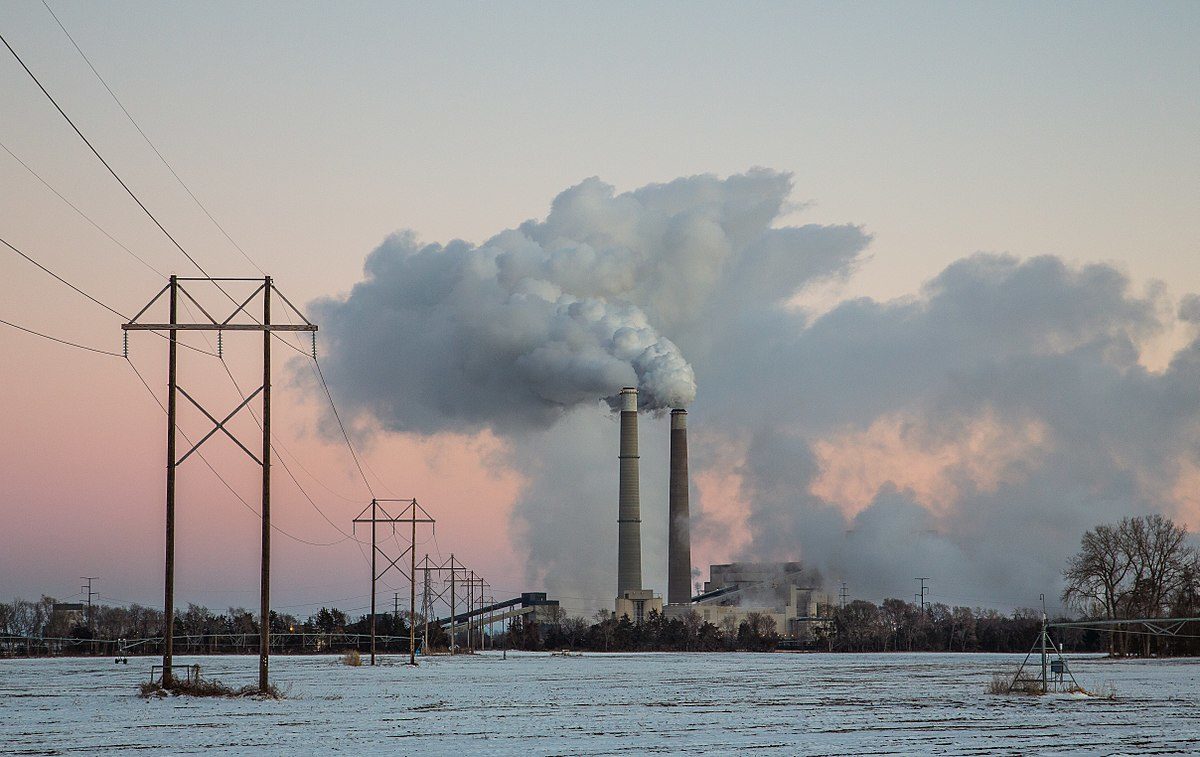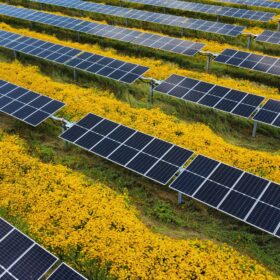As a growing number of utilities across the U.S. announce their plans for going carbon free, some are facing questions about their timelines and why they can’t move faster. For example, while the municipal utility Austin Energy is working toward closing its last coal plant by 2035, investor-owned Arizona Public Service has given itself until 2050.
A new white paper from Energy Innovation, an energy policy firm, suggests that one way to speed up the process may be found in the “solar-for-coal swaps” that a small number of U.S. electric cooperatives have successfully completed. As the name implies, the main idea here is for a utility to swap out power from aging coal plants for solar generation. Private sector financing for the swap allows the coal plants to be bought and then retired ahead of schedule.
White paper authors Ron Lehr and Mike O’Boyle see such deals as the kind of financial innovation made possible by energy markets’ ongoing shift away from coal. Prior research from Energy Innovation, they say, found that while 179 GW of coal-fired generation in the United States were already more expensive to operate than solar back in 2018, plant retirements were running at only about 10 GW per year.
New Mexico’s Kit Carson Electric Cooperative provided an early model for solar-for-coal swaps in 2016 with its $37-million buyout of a contract with Tri-State Generation and Transmission Cooperative, which had the co-op locked into a power supply heavily dependent on coal. Guzman Energy, a Denver-based wholesale power provider, helped with the initial financing and has since partnered with Kit Carson on building a solar portfolio that now totals 16.8 MW, with four more projects in the pipeline.
The co-op is targeting 2022 for providing all its customers’ daytime power from clean energy and, after paying off the exit fee, will see rates drop from $75 per MWh to $47 per MWh.
Small co-ops, big impact
As detailed in the white paper, Guzman has also backed similar swaps for Holy Cross Energy and Delta-Montrose Electric Association (DMEA), two Colorado co-ops. For Holy Cross, which buys power from Public Service Company of Colorado, an investor-owned utility (IOU), the swap involved Guzman buying out the co-op’s 8% interest in the IOU’s Comanche 3 coal plant. The replacement power in this case came from a 100 MW wind project.
DMEA completed its buyout, also from Tri-State, early in July. Guzman financed the $62.5-million exit fee and is providing the co-op with an initial power mix of 40% clean energy, while also beginning development on a 10 MW solar project.
The impact of these swaps has been significant. In June of 2019, Guzman offered Tri-State $500 million to accelerate the retirement of about 50% of its coal fleet. Tri-State answered in January with a plan of its own, which will retire its coal plants in New Mexico by the end of 2020 and in Colorado by 2030.
On July 29, the New Mexico Public Regulation Commission followed suit, approving the replacement of the San Juan coal plant, slated to close in 2022, with 650 MW of solar and 300 MW of battery storage.
In a recent interview with pv magazine, O’Boyle said that swaps may be easier for unregulated municipal utilities and co-ops, which are less motivated by profit and more open to public-private partnerships. But, as the report notes, the entry of innovative, third-party financing into energy markets serves as a clear warning to IOUs.
As more coal plants close, those remaining will be more expensive to run, and privately financed swaps will become increasingly attractive to municipal and cooperative utilities, as well as large corporate customers.
IOUs will need to come up with their own alternatives. For example, Public Service Company of New Mexico, the IOU that owns the San Juan coal plant, will finance that retirement via low-interest federal bonds.
As the white paper concludes: “Creative responses to solar available at less cost than existing coal have only begun to be explored.”
This content is protected by copyright and may not be reused. If you want to cooperate with us and would like to reuse some of our content, please contact: editors@pv-magazine.com.








“As more coal plants close, those remaining will be more expensive to run…”
This is something that isn’t written about much. As more coal plants retire it costs more to run the ones that remain – the parts are going to cost more, the coal is going to cost more, etc. This is the destruction of the economies of scale that coal has been able to get. When coal mines have fewer customers their fixed costs to each customer go up. Hopefully this will accelerate. The only good thing about COVID that I know of is that the electric demand has gone down so much that coal is losing even faster than before. Coal capacity factor so far in 2020 has had one month above 50% and that was July at 55%. Previous to that CF for coal had been Jan at 39.1%, Feb at 36.4%, March at 30.9%, Apr at 25.5%, May at 28.4% and June at 41%. There are a lot of coal facilities losing money this year. And, as solar and wind keep getting deployed and are the cheapest to produce electricity this will continue. Next year coal will make a small “comeback” but will really start dropping after that.
I am happy that Guzman is getting more clients especially those from Tri-State. The more they can push Tri-State go RE the cleaner the air here in CO will be.
What does it mean, as the article says, to have “300 MW of battery storage”?
How much power can that storage provide for how long? Is it long enough to last through the night? Or through a week of low wind?
These are important engineering and policy questions but from this article, there is no way to answer them.
Please report how much energy, e.g. MWh, an energy storage facility can store.